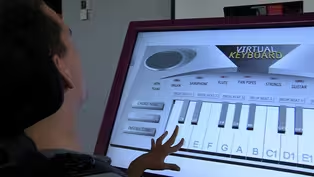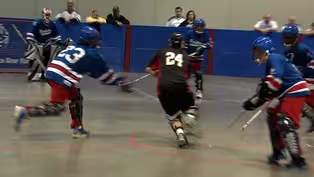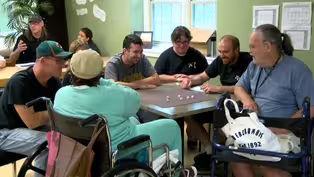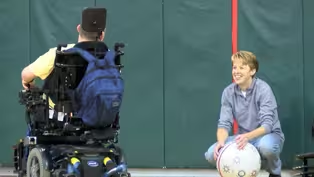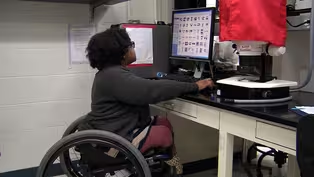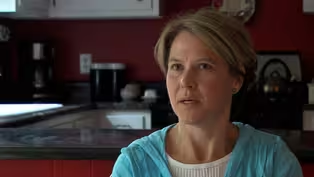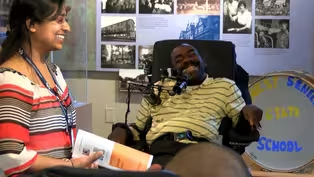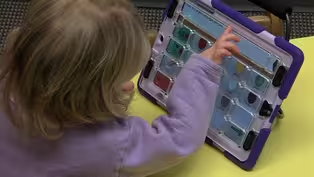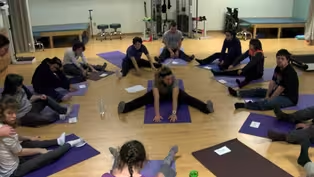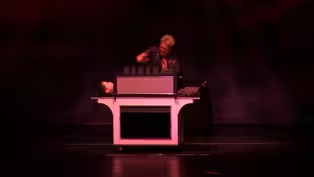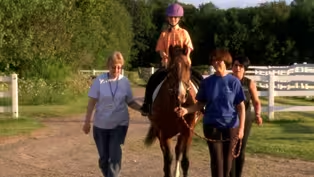Move To Include
Braille
Special | 3m 19sVideo has Closed Captions
Learning about braille. What it is and how it’s written.
Learning about braille. What it is and how it’s written.
Problems playing video? | Closed Captioning Feedback
Problems playing video? | Closed Captioning Feedback
Move To Include is a local public television program presented by WXXI
Move To Include
Braille
Special | 3m 19sVideo has Closed Captions
Learning about braille. What it is and how it’s written.
Problems playing video? | Closed Captioning Feedback
How to Watch Move To Include
Move To Include is available to stream on pbs.org and the free PBS App, available on iPhone, Apple TV, Android TV, Android smartphones, Amazon Fire TV, Amazon Fire Tablet, Roku, Samsung Smart TV, and Vizio.
More from This Collection
Homework Hotline, designed for grades 4 through 12, provides the tools students need to succeed both in and out of the classroom, & supports academic achievement across a variety of learning standards. This collection is specifically curated by Move to Include & presents in-depth stories & profiles of individuals & organizations who are working to make our community inclusive & accessible for all.
Video has Closed Captions
How touch screen technology is making learning more accessible for all students. (2m 58s)
Video has Closed Captions
See how floor hockey is helping these players both in and out of the rink. (2m 16s)
Video has Closed Captions
A program that specializes in working with individuals suffering from traumatic brain injury. (4m 6s)
Video has Closed Captions
Recreational activities through adaptive sports and inclusive recreation. (5m 27s)
Video has Closed Captions
Genomics and how scientists use computers to analyze data. (2m 55s)
Video has Closed Captions
Kerrie Giesen tells us what it is like to have Multiple Sclerosis and how her life has changed. (3m 11s)
Video has Closed Captions
Many people with disabilities were sent to live in institutions away from their families. (2m 28s)
Video has Closed Captions
Charles uses eye gaze technology and a device called a Dynavox to help him communicate. (2m 21s)
Video has Closed Captions
How speech pathologists help children with communicative disorders. (2m 25s)
Video has Closed Captions
Using magic tricks to help therapists provide better care to people with disabilities. (4m 24s)
Video has Closed Captions
Equine assisted therapy. Learn about the benefits of working with horses. (2m 37s)
Providing Support for PBS.org
Learn Moreabout PBS online sponsorship(tapping typewriters) Braille is a code?
Okay.
It was developed by Louis Braille, and it's based on six dots.
And there are three dots on the left side.
And three dots on her right side.
Depending on which one of those dots are raised.
Depends on what the letter is.
So each of the dot images is raised up so it can be felt that you basically you have to your finger.
So I'm just going to distinguish what the image feels like.
You're going to know which letter it is.
And you read pretty basically the same way that you do when you're reading print.
The difference is, is you're reading letter by letter.
So this is the swing.
So this has the two columns with three dots on the left and three dots on the right, which makes up our Braille.
So letter D is dots one, four and five.
If I were to write that on the Braille writer, I would pull the swing cell apart and it now corresponds to the keys on the Braille writer.
So if this a cell one, we would press this key.
This machine is called the Braille Writer.
It has six keys to represent the symbols and the contractions and patterns.
And if you push down like one or more, you can make patterns on the paper that I. Braille is important because Braille is literacy, and literacy is the ability to read right, speak and listen.
And it's the same for print readers.
They need to be able to communicate.
They need to be literate for Braille users, they're no different.
They just communicate in a different means than print students.
But everybody, whether you're a Braille user or a print user, everyone needs to be able to communicate.
I'm doing a poem about me, all about me.
It's a rhyming poem.
I like to eat.
I like to drink.
My favorite color is pink.
And that's.
Great.
I try.
Support for PBS provided by:
Move To Include is a local public television program presented by WXXI
